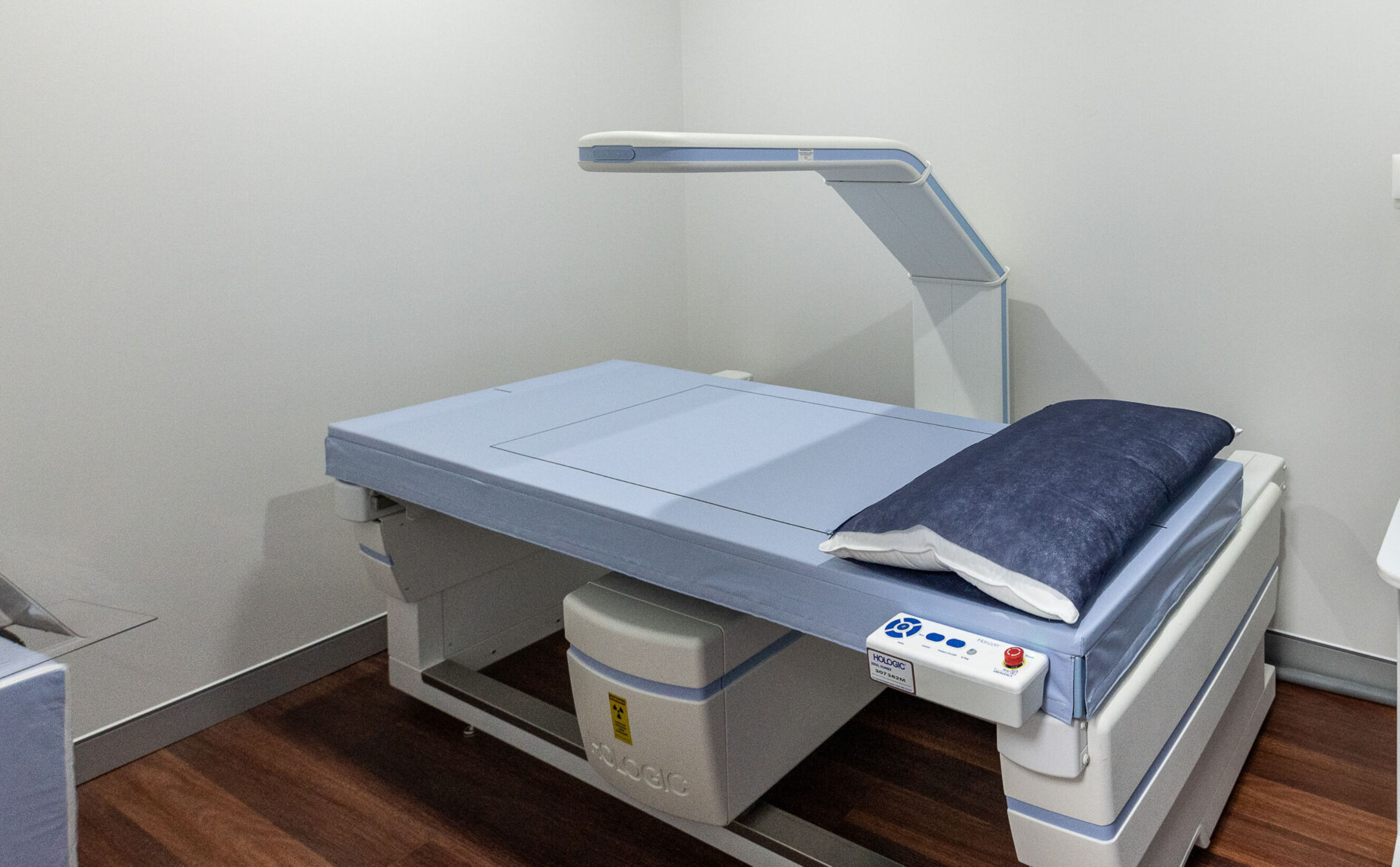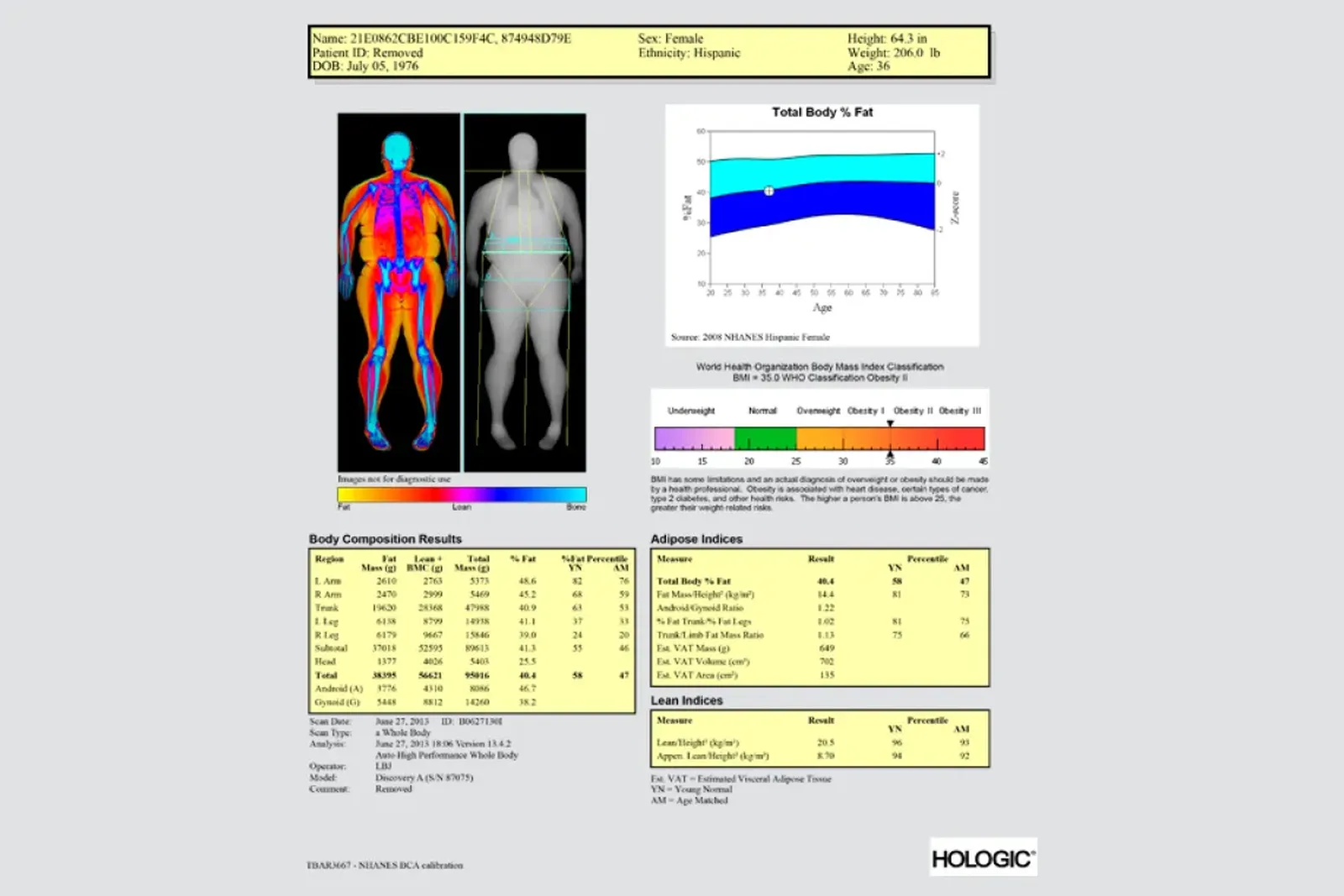
Bone Mineral Density (DEXA) Scans
DEXA (dual energy X-ray absorptiometry) is used to measure bone mineral density (BMD).
The process uses very low dose X-rays and is safe and non-invasive procedure commonly used to diagnose osteoporosis.

The pioneer in X-ray bone densitometry
Harbour Radiology Mosman, Lane Cove, Hoxton Park and Austral have invested in the Hologic DXA System, the pioneer in X-ray bone densitometry. This multi-faceted system helps clinicians assess bone health, body composition and cardiovascular risk — critical elements that will help patients keep life in motion.
The procedure takes less than 5 minutes.

Body Mass Composition
Harbour Radiology is proud to present state of the art DEXA whole body scanning to patients. It provides our patients with accurate measurements of lean muscle, fat and bone mass for the entire body and individual regions.
If you are serious about your fitness or weight-loss program, you may consider performing a DEXA body composition scan to assess and show the distribution of your body fat. Along with advice from your personal trainer, dietician or exercise physiologist, a DEXA body composition scan will provide you with the information you need to help you achieve your goals.
With a DEXA full body composition scan, you’ll know when your program is working and when it’s not. Accurate measurement will assist you in making more effective diet and training program decisions.
Please bring your request form from your referring practitioner to your appointment.
Please remember to bring all previous X-rays and imaging reports with you to your appointment.
Frequently Asked Questions
What is a Bone Densitometry (DEXA) scan?
A DEXA scan, short for Dual-Energy X-ray Absorptiometry, is a non-invasive type of medical imaging that measures bone mineral density (BMD) and body composition. It's commonly used to diagnose osteoporosis or assess the risk of developing it. The DEXA scanner emits low-dose X-ray beams, which are absorbed differently by bone and soft tissue. By analyzing the differences in absorption, the DEXA machine can accurately measure bone density. This information helps healthcare providers evaluate bone health and assess the risk of fractures.
Why have I been referred for a DEXA scan?
You might be referred for a DEXA scan for several reason, including:
- Osteoporosis Risk Assessment: If you have risk factors for osteoporosis, such as a family history of the condition, long-term use of certain medications (like corticosteroids), or a personal history of fractures, your healthcare provider may recommend a DEXA scan to assess your bone density and determine your risk of developing osteoporosis.
- Bone Health Monitoring: If you've been diagnosed with osteoporosis or osteopenia (low bone density), regular DEXA scans may be recommended to monitor changes in bone density over time and evaluate the effectiveness of treatment.
- Fracture Risk Assessment: If you've experienced a fracture after a minor trauma or if you're at risk of fractures due to conditions such as hyperparathyroidism or hyperthyroidism, a DEXA scan can help assess your fracture risk by measuring bone density.
- Monitoring Response to Treatment: If you're undergoing treatment for osteoporosis or other bone-related conditions, DEXA scans may be used to monitor how well your bones are responding to treatment and whether any adjustments are needed.
- Assessment of Body Composition: In some cases, DEXA scans may also be used to assess body composition, including body fat percentage, lean muscle mass, and distribution of fat throughout the body. This can be useful for evaluating overall health and guiding interventions for weight management or muscle building.
How to prepare for an DEXA
No preparation is required for a DEXA scan. You may want to wear loose fitting clothing and avoid any clothing with metal (i.e., zippers, metal buttons) as they interfere with the x-ray beam. This is not mandatory and, should you need to undress, we will provide you with a gown.
DEXA Medicare Criteria
*Medicare has strict guidelines for the rebate of DEXA examinations. Please check with our friendly staff when making your appointment to ensure that you are eligible for a Medicare rebate.
When there is no claimable item number, there is a small private fee.
12306(one test every 24 months)
Claimable if bone density test performed for:
1. The confirmation of a presumptive diagnosis of low bone density made
on the basis of 1 or more fractures occurring after minimal trauma in
the last ten years; or
2. Monitoring of low bone density proven by a bone density test at least 12 months previously.
12312(one test every 12 months)
Claimable if bone density test performed for the diagnosis and monitoring of bone loss associated with:
1. Prolonged glucocorticoid therapy;
2. Any conditions associated with excess glucocorticoid secretion.
3. Male hypogonadism; or
4. Female hypogonadism lasting 6 months before the age of 45.
12315(one test every 24 months)
Claimable if bone density is performed for the diagnosis and monitoring of bone loss associated with:
1. Primary hyperparathyroidism;
2. Chronic liver disease;
3. Chronic renal disease;
4. Any proven malabsorptive disorders;
5. Rheumatoid arthritis; or
6. Any conditions associated with thyroxine excess.
12321(one test every 12 months)
Claimable if bone density performed 12 months following a significant change in therapy for:
1. Established low bone density; or
2. The confirmation of a presumptive diagnosis of low bone density made
on the basis of 1 or more fractures occurring after minimal trauma.
12322(one test every 24 months)
Claimable if patient is aged 70 or older and has a T- Score from previous BMD between -1.5 and -2.4.
12320(one test every 5 years)
Claimable if :
* Patient is 70 years or older and not previously had a BMD examination (initial scan )
* Patient has a T- Score from a previous BMD of -1.5 and above.
** TO CLAIM A MEDICARE REBATE THE ABOVE CRITERIA MUST BE MET AND SHOWN ON A DOCTOR’S REFERRAL
Please bring your request form from your referring practitioner to your appointment.
Please remember to bring all previous X-rays and imaging reports with you to your appointment.